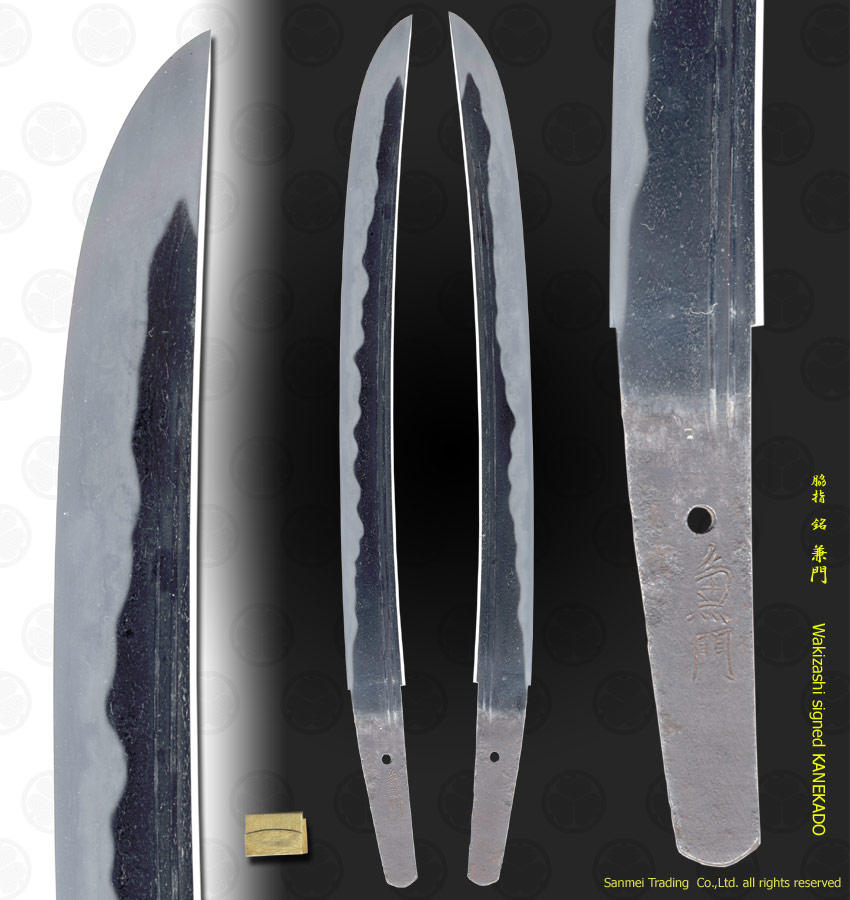Length of cutting edge39.7cm Curvature1.0cm Width of base33.7mm Thickness of base7.2mm
Kitae(forging pattern) : Kitae is conspicuous Itame hada (wooden pattern), Ji-nie attaches to the surface and there is chikei (Nie-lines) in hiraji.
Hamon(tempering pattern) : Hamon is strong-nie based, gunome large zig-zag mixing in with choji-ha (clove outline). There is Ashi working toward the cutting edge and slight sunagashi (nie-lines) in the interior of temper. There works with Yubashiri in hiraji-surface that creates Hitatsura tempering pattern.
Boshi (tip): Boshi is wavy brushing and sharpened up then a bit deeply turn back.
Nakago(tang) : The tang is UBU unaltered. One Mekugi-ana (retaining hole). Higaki file marks. kurijiri heel shape in full. The signature in hakiomote is chiselled with two large character that reads KANE KADO.
This hirazukuri wakizashi is brave, large-sized and was made under the strong influence of Soshu-den school. This unique wakizashi is reported in the book of Kanto Hibisho (second edition) written by Dr. Honma Kunzan and there is sayagaki by him. The following is translated from his diary book of kanto Hibisho:
[Mihaba is wide and there is a bit deeply upper pointed curve. Kitake is outstanding and some Chikei (nie lines) and Ji-nie activity. Hamon is strong nie based, Large gunome and choji-ha of which part of them collapsed. The interior of temper is active with nie-ashi, slight kinsen and sunagashi activity and hiraji works with Yubashiri and Shima temper splashed onto the surface. Boshi is wavy and nie brushing flows upward. Tang is ubu (unaltered) and there is mass in the cutting edge of the tang, back ridge is flat, Higaki file marks. Kanekado families were belonged to Zenjo school and recognize several generations. The entire workmanship is full of old manner and can be recognized as a work by either first or second generation during middle of the 15th century (early Muromachi period). Kanekado usually works under mino-school, however this wakizashi was made under strong influence of So-shu-den.]
There is a slight darkish forging mark along the back ridge, 86mm above munemachi. The entire blade is in fairly good condition and healthy for the age 560 years ago. This wakizashi is powerful and worth seeing. Valuable research material as well.
Double gold habaki collar Shirasaya plain wood material (Sayagaki by Dr.Kunzan)
